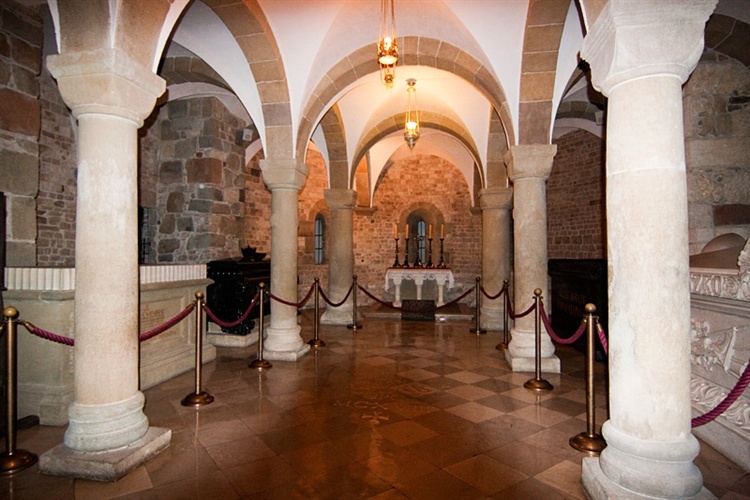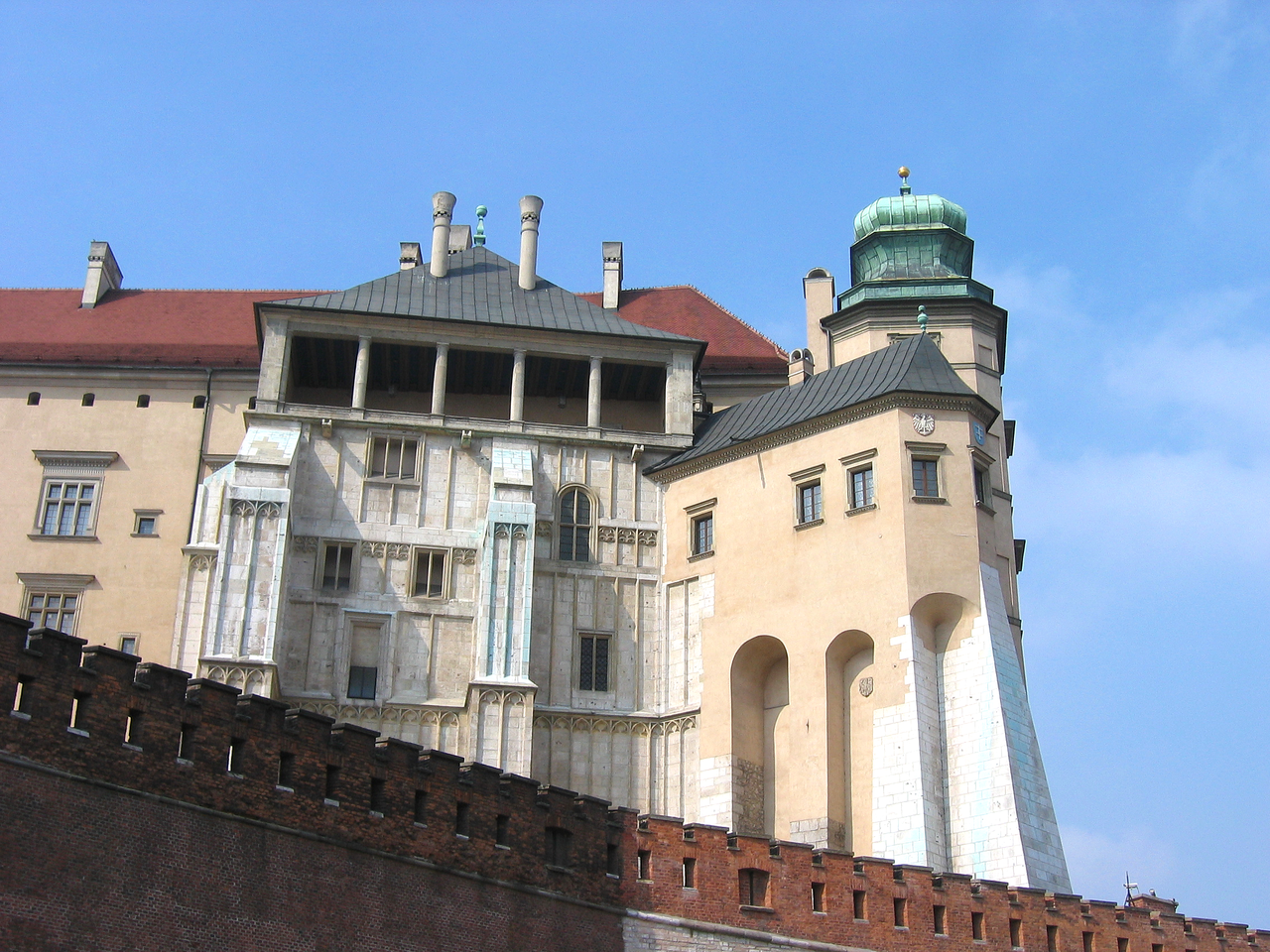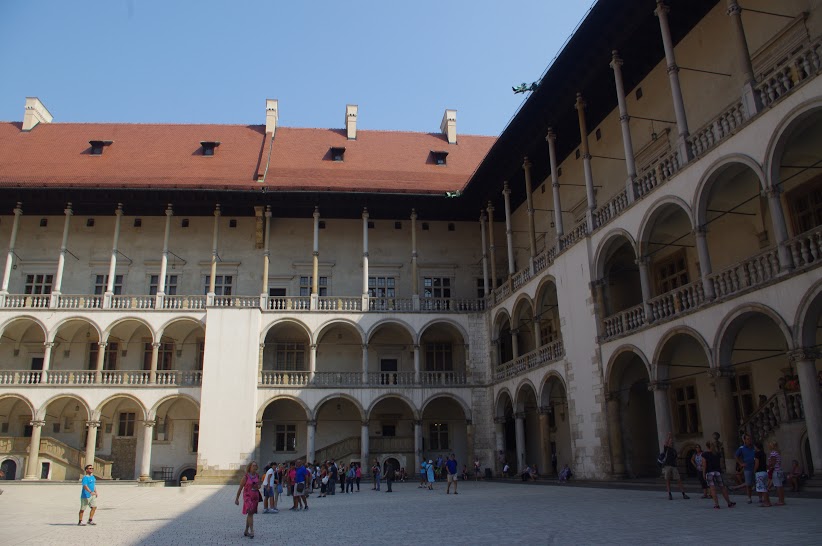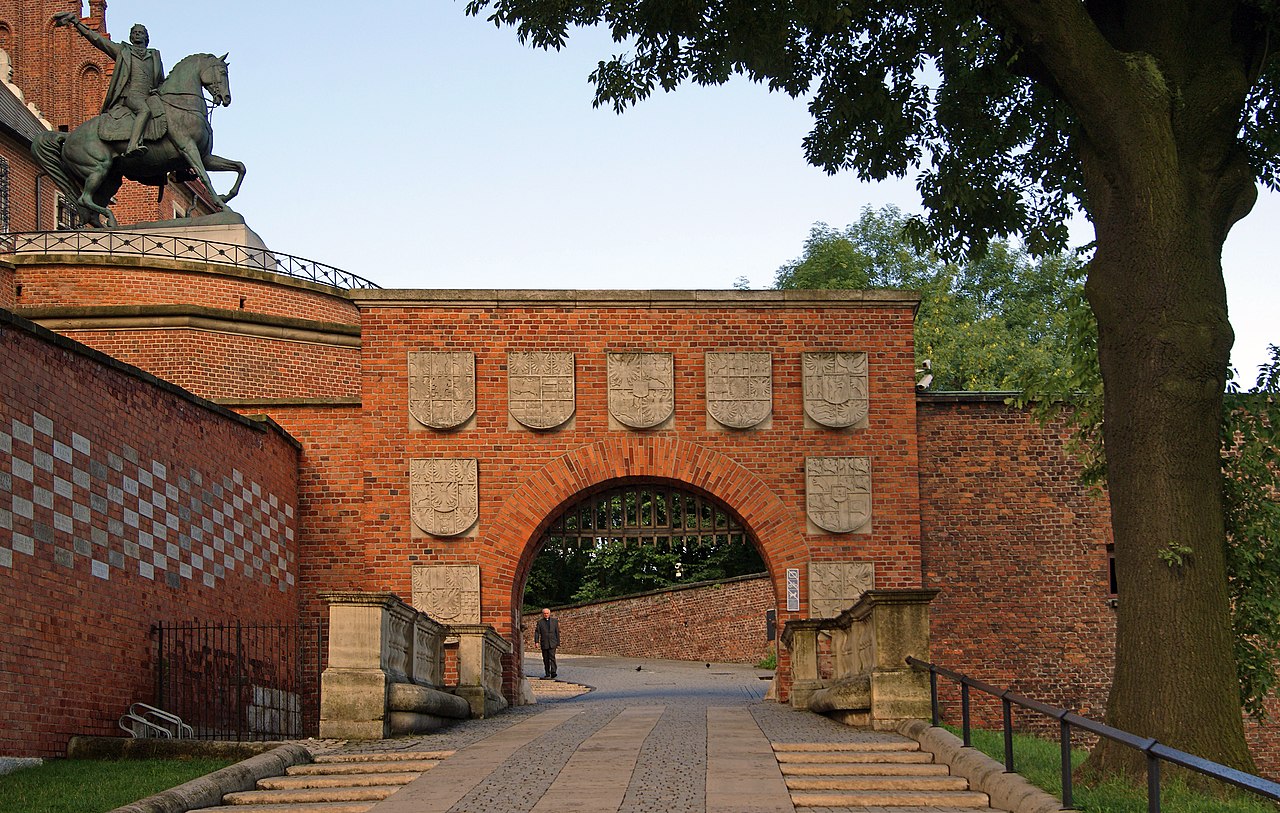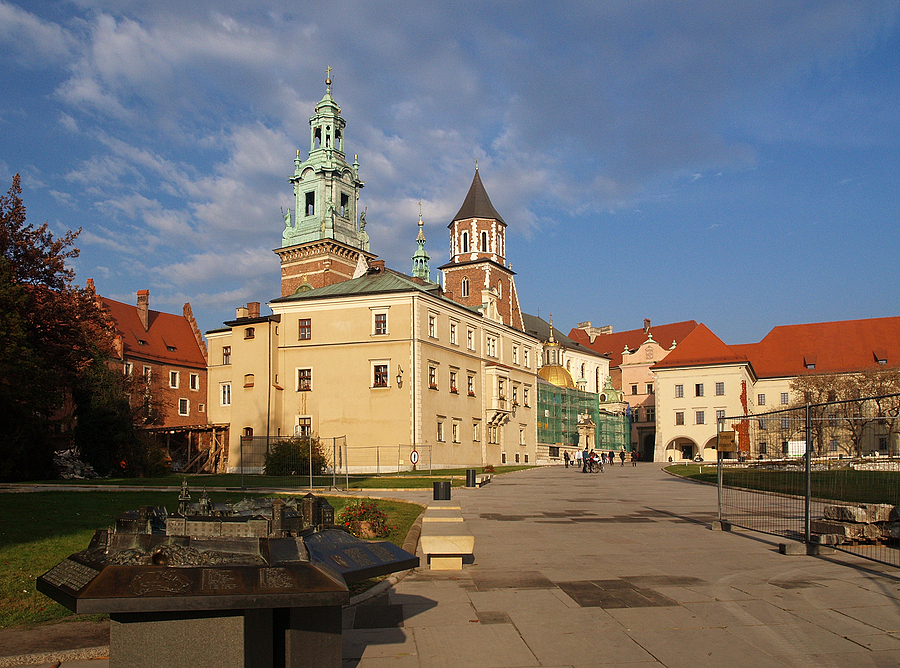 Wawel – Katedra
Wawel – Katedra
Obecna katedra, pochodząca z 1364 r., jest trzecią świątynią stojącą w tym miejscu. Budowę kościoła śś. Wacława i Stanisława, zainicjowaną przez biskupa Nankera, zakończono w 1364 r. Pierwotną budowlę, w swym zrębie gotycką, wzniesiono z cegły i białego kamienia wapiennego, nadając jej formę trójnawową z transeptem i obejściem wokół prezbiterium. Przez lata dostawiano kaplice i przybudówki, co wpłynęło na podwyższanie naw bocznych i zaburzyło jednolity charakter bazyliki.
Ograniczony kształtem Wzgórza Wawelskiego plac, na którym stoi katedra, nie pozwalał na przebudowy zakrojone na szerszą skalę. W efekcie podziwiana dziś katedra jest kompilacją wielu stylów architektonicznych.
Bez trudności można przed wejściem znaleźć przewodnika, który oprowadzi po katedrze. Koszt nie jest specjalnie duży, a jeśli przewodnik potrafi interesująco opowiadać, to nawet warto skorzystać. Oczywiście istnieje zawsze ryzyko, że trafi się na oprowadzacza, który traktuje klientów jak zdziecinniałych barbarzyńców.
Nawa główna i prezbiterium
Do Katedry Wawelskiej wchodzi się od strony zachodniej. Portal głównego wejścia pochodzi z 1640 r.; po bokach znajdują się dwie XIV-wieczne płaskorzeźby przedstawiające św. Małgorzatę i św. Michała. Po lewej stronie zaskakują zawieszone kości zwierząt (czaszka nosorożca oraz kości mamuta i wieloryba) niegdyś uważane za pozostałości po gigantycznych prehistorycznych potworach. Drzwi wejściowe są bardzo stare, kute z żelaza. Widnieje na nich zwielokrotniony motyw monogramu Kazimierza Wielkiego, znany powszechnie z wizytówki telewizyjnego programu krakowskiego. Wkraczających do wnętrza najpierw ogarnia mrok. Dopiero po chwili wyłania się srebrzysta barokowa konfesja św. Stanisława, stojąca na skrzyżowaniu nawy głównej i transeptu. Trumnę patrona Polski podtrzymują cztery anioły.
Dawniej u stóp tego grobu królowie składali trofea wojenne. Jagiełło na przykład złożył sztandary spod Grunwaldu, a Jan Sobieski ofiarował chorągiew spod Wiednia.
Cały ołtarz powstał w 1629 r. według zamysłu Giovanniego Trevano; srebrna trumna z 1671 r., zawierająca szczątki biskupa, jest dziełem gdańszczanina Piotra von der Rennena. Poprzednią zrabowali Szwedzi w czasie potopu. Płaskorzeźby na bokach trumny ukazują sceny z życia świętego. Wysoki grobowiec zwieńczony kopułą adorują cztery nagrobki na filarach kościoła, zwrócone w kierunku sanktuarium. Należą do następców św. Stanisława, biskupów krakowskich: Marcina Szyszkowskie-go, Piotra Gembickiego, Jana Małachowskiego i Kazimierza Łubieńskiego.
Wnętrze katedry nie jest tak duże, jak można by tego oczekiwać. Zapełnione gęsto ołtarzami i grobowcami, w bocznych nawach spowite jest cieniem, ale już w okolicach prezbiterium i obejścia znacznie się rozjaśnia. Z powodu nieustannego ruchu zwiedzających przypomina raczej dom aukcyjny niż kościół. Tylko nieliczni modlą się, reszta ogląda, spaceruje lub odpoczywaj
Aby dokładnie obejrzeć prezbiterium, najlepiej siąść w ławce i pozwolić oczom do woli ogarniać tutejsze cuda. I niech towarzyszy temu świadomość, że tu właśnie koronowano władców Polski i żegnano ich podczas pogrzebów. Ołtarz główny powstał w połowie XVII w. Pokrywają go płatki złota, które dodają splendoru niepozornemu, ale cennemu obrazowi Ukrzyżowanie. Po prawej stronie pod purpurowym baldachimem stoi ozdobny barokowy tron biskupi, obok którego za czasów monarchii stał tron króla przysłuchującego się kazaniom. Pod stopniami przed ołtarzem znajduje się grobowiec kardynała Fryderyka Jagiellończyka, opatrzony płytą z płaskorzeźbami (XVI w.) przedstawiającymi młodego kardynała polecającego się opiece Matki Boskiej oraz św. Stanisława i cudownie wskrzeszonego Piotrowina.
Po lewej stronie (patrzącego) był niegdyś pierwszy grób królowej Jadwigi. Warto rzucić okiem na sklepienie prezbiterium, na którym zachowały się XIV-wieczne rzeźby gotyckie, tak zwane zworniki figuralne. Uwagę przyciągają również drewniane stalle z czasów późnego renesansu, powstałe w 1620 r., i wielkie arrasy łagodzące nieco surowość kamiennych ścian.
